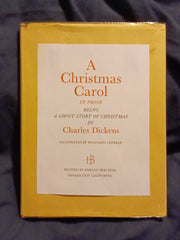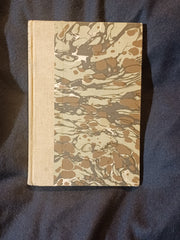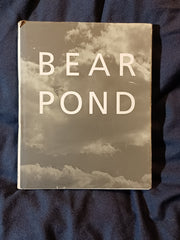William Morris : an Address Delivered the Xith November MDCCCC At Kelmscott House, Hammersmith (Association Copy)
William Morris : an Address Delivered the Xith November MDCCCC At Kelmscott House, Hammersmith, before the Hammersmith Socialist Society. by J.W. MacKail. Hammersmith Publishing Society. 1902. (Printed at the Chiswick Press). brown paper covered boards with vellum spine. Black lettering on spine "William Morris". There is some wear to the cover edges and some discoloration to the vellum spine. There is some bumping to the cover edges. There appears to be just a hint of light foxing. There is a ripple to the pages at the bottom of the book. A bookseller's price and coding is on the lower corner of the first blank page. Not ex-library, not remaindered, not a facsimile reprint. Photos available on request. For sale by Jon Wobber, bookseller since 1978. BE30a
Gift inscription appears to be from S.C.Cockerell....."Sydney Cockerell made his way initially as clerk in the family coal business, George J. Cockerell & Co, until he met John Ruskin. According to John Ruskin by Tim Hilton (p. 816), around 1887 Cockerell sent Ruskin some sea shells, which he collected. At that time he had already met William Morris. Cockerell tried to patch up a quarrel between Ruskin and Octavia Hill (Hilton, p. 832), who had been a friend of his late father Sydney John Cockerell, and godmother to his sister Olive.
From 1891, Cockerell gained a more solid entry to intellectual circles, working for the Society for the Protection of Ancient Buildings. The architect Detmar Blow was a friend (Hilton p. 843). He acted as private secretary to William Morris, becoming a major collector of Kelmscott Press books; was secretary also to Wilfrid Scawen Blunt; and was Thomas Hardy's executor.
From 1908 to 1937 he was Director of the Fitzwilliam Museum, in Cambridge. He built up the Museum's collections of private-press books and manuscripts, prints, drawings, paintings (including Titian's Tarquin and Lucretia), ceramics and antiquities. It was he who secured the Museum's rich holdings of works by William Blake and who bought its first Picasso print. He raised funds for building extensions, set up the first 'Friends' scheme in Britain and introduced Sunday opening.
He was a leading figure in the revival of italic handwriting as an artistic craft." Wiki.
to A. Ernest Barnsley "Ernest and Sidney Barnsley were Arts and Crafts movement master builders, furniture designers and makers associated with Ernest Gimson. In the early 20th century they had workshops at Sapperton, Gloucestershire." Wiki.
"Arthur Ernest Barnsley was born in 1863 and was articled to Joseph Lancaster Ball for four years and six months, remaining as assistant for a further 18 months. He subsequently worked as assistant to William Howard Seth-Smith and to John Dando Sedding, passing the qualifying exam in 1886 and being admitted ARIBA on 18 April 1887, his proposers being Sedding, Frank Barlow Osborn and Julius Alfred Chatwin. He resigned his RIBA membership in 1893. Generally known simply as Ernest Barnsley, he became a prominent Arts and Crafts architect-craftsman in the Cotswolds, working in association with his younger brother Sidney Barnsley (born 1865) and Ernest Gimson in Sapperton, Gloucestershire. He died in 1926." - Dictionary of Scottish Architects, Architect Biography Report, May 2016.
"He was an enthusiastic and respected member of the Society for the Protection of Ancient Buildings." - Arts and Crafts Museum at Cheltenham Art Gallery and Museum
Gift inscription is dated Oct, 1902














